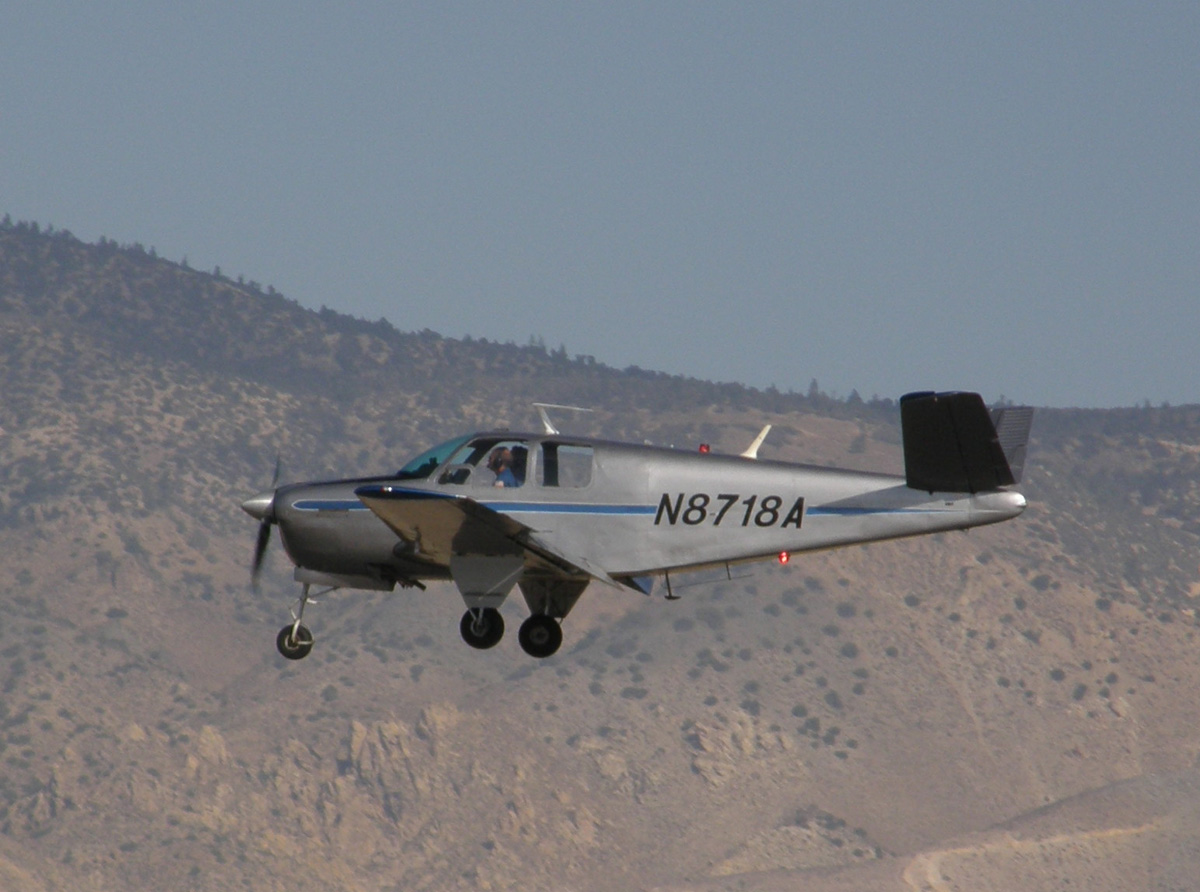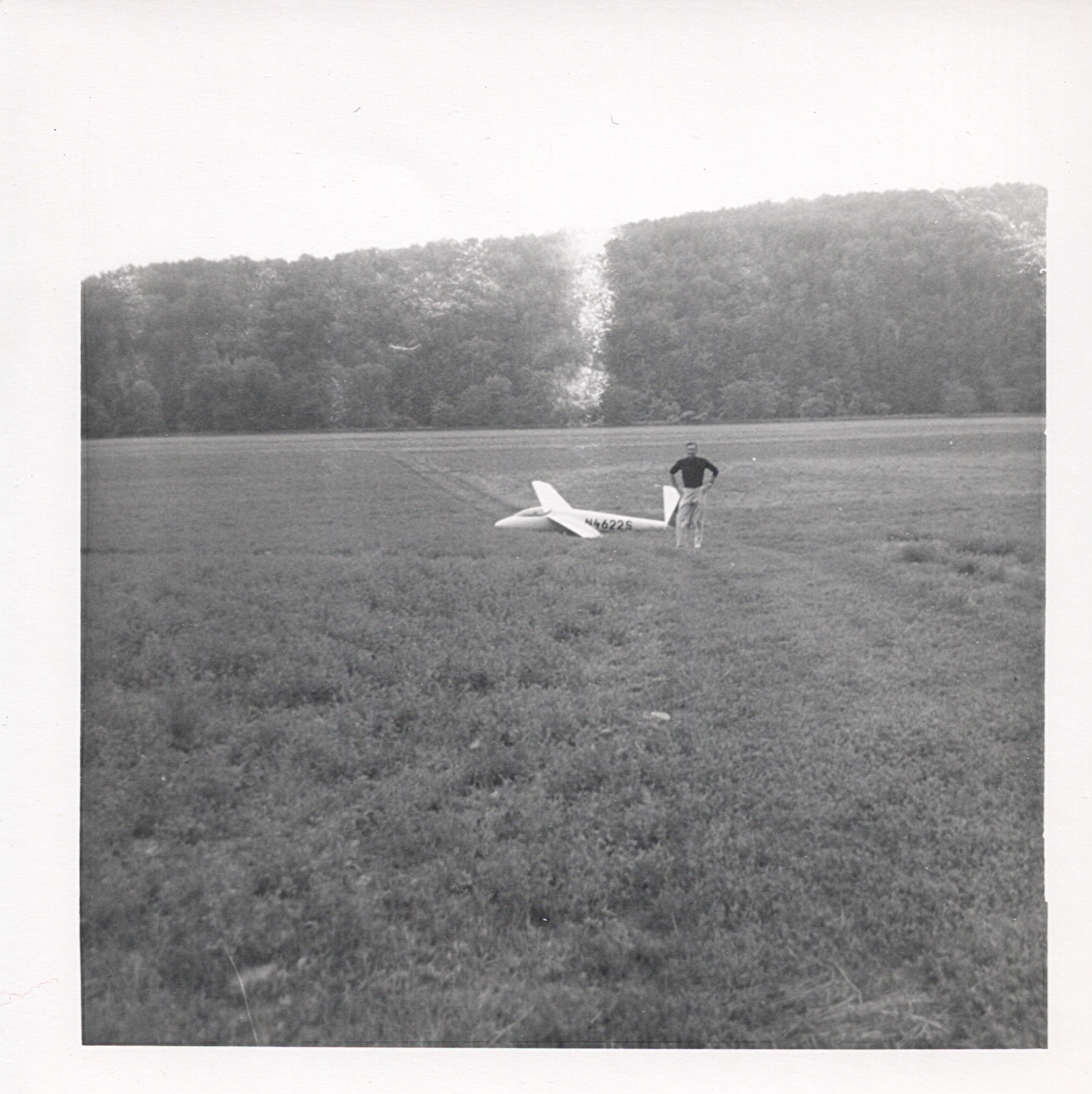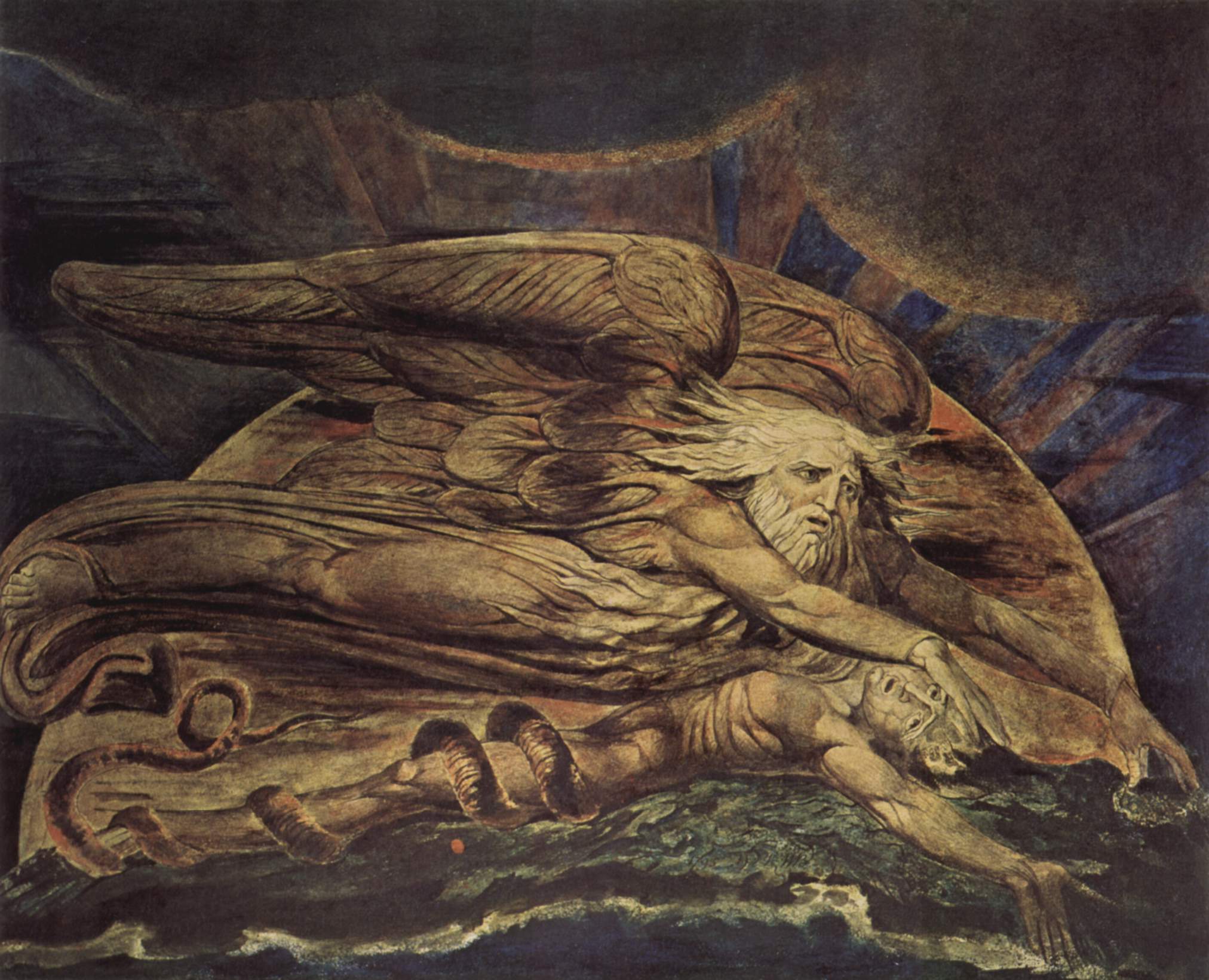|
SZD-17x Jaskółka L
The SZD-17X Jaskółka L was a single-seat high-performance competition glider designed and built in Poland at ''Szybowcowy Zakład Doświadczalny'' (Glider Experimental Works) in Bielsko-Biała in 1955. Development The SZD-17X Jaskółka L (''Swallow Laminar'') drew on the experience gained from developing the SZD-11 and SZD-14X gliders combined with new laminar flow aerofoil sections and flaps, as well as provision for water ballast and a fully retractable undercarriage. Main designer was Tadeusz Kostia, main constructor Jan Dyrek. Construction of the SZD-17X was of conventional wooden semi-monocoque fuselage and thick skinned wooden wings with wooden spars, retaining the Jerzy Rudlicki's butterfly tail of the SZD-14X. First flight of the SZD-17X took place at Bielsko airfield, flown by Adam Zientek, on 9 March 1956. Four aircraft, (reg'n no.'s SP-1504 to SP-1507), were built for use in 1956 World Gliding Championships, but performance fell short of expectations and they ... [...More Info...] [...Related Items...] OR: [Wikipedia] [Google] [Baidu] |
WikiProject Aircraft
A WikiProject, or Wikiproject, is an affinity group for contributors with shared goals within the Wikimedia movement. WikiProjects are prevalent within the largest wiki, Wikipedia, and exist to varying degrees within Wikimedia project, sibling projects such as Wiktionary, Wikiquote, Wikidata, and Wikisource. They also exist in different languages, and translation of articles is a form of their collaboration. During the COVID-19 pandemic, CBS News noted the role of Wikipedia's WikiProject Medicine in maintaining the accuracy of articles related to the disease. Another WikiProject that has drawn attention is WikiProject Women Scientists, which was profiled by ''Smithsonian Magazine, Smithsonian'' for its efforts to improve coverage of women scientists which the profile noted had "helped increase the number of female scientists on Wikipedia from around 1,600 to over 5,000". On Wikipedia Some Wikipedia WikiProjects are substantial enough to engage in cooperative activities with outsi ... [...More Info...] [...Related Items...] OR: [Wikipedia] [Google] [Baidu] |
V-tail
The V-tail or ''vee-tail'' (sometimes called a butterfly tail or Rudlicki's V-tailGudmundsson S. (2013). "General Aviation Aircraft Design: Applied Methods and Procedures" (Reprint). Butterworth-Heinemann. p. 489. , 9780123973290) of an aircraft is an unconventional arrangement of the tail control surfaces that replaces the traditional vertical and horizontal surfaces with two surfaces set in a V-shaped configuration. It is not widely used in aircraft design. The aft edge of each twin surface is a hinged control surface called a ruddervator, which combines the functions of both a Rudder#Aircraft rudders, rudder and Elevator (aeronautics), elevator. History The V-tail was invented in 1930 by Polish engineer Jerzy Rudlicki and was tested for the first time on a Hanriot HD.28 trainer, modified by Poland, Polish aerospace manufacturer Plage i Laśkiewicz, Plage and Laśkiewicz in the summer of 1931. Variants The X-shaped tail surfaces of the experimental Lockheed XFV were essential ... [...More Info...] [...Related Items...] OR: [Wikipedia] [Google] [Baidu] |
1950s Polish Sailplanes
Year 195 ( CXCV) was a common year starting on Wednesday of the Julian calendar. At the time, it was known in Rome as the Year of the Consulship of Scrapula and Clemens (or, less frequently, year 948 ''Ab urbe condita''). The denomination 195 for this year has been used since the early medieval period, when the Anno Domini calendar era became the prevalent method in Europe for naming years. Events By place Roman Empire * Emperor Septimius Severus has the Roman Senate deify the previous emperor Commodus, in an attempt to gain favor with the family of Marcus Aurelius. * King Vologases V and other eastern princes support the claims of Pescennius Niger. The Roman province of Mesopotamia rises in revolt with Parthian support. Severus marches to Mesopotamia to battle the Parthians. * The Roman province of Syria is divided and the role of Antioch is diminished. The Romans annex the Syrian cities of Edessa and Nisibis. Severus re-establishes his headquarters and the colonies th ... [...More Info...] [...Related Items...] OR: [Wikipedia] [Google] [Baidu] |
List Of Gliders
This is a list of gliders/sailplanes of the world, (this reference lists all gliders with references, where available) Note: Any aircraft can glide for a short time, but gliders are designed to glide for longer. By nationality * List of American gliders * List of Argentine gliders * List of Australian gliders * List of Austrian gliders * List of Belgian gliders * List of Brazilian gliders * List of British gliders * List of Bulgarian gliders * List of Canadian gliders * List of Chinese gliders * List of Czechoslovak gliders * List of Danish gliders * List of Dutch gliders * List of Finnish gliders * List of French gliders * List of German gliders * List of Greek gliders * List of Hungarian gliders *List of Indian gliders A list is a set of discrete items of information collected and set forth in some format for utility, entertainment, or other purposes. A list may be memorialized in any number of ways, including existing only in the mind of the list-maker, bu ... * List ... [...More Info...] [...Related Items...] OR: [Wikipedia] [Google] [Baidu] |
EoN Olympia
The Eon Olympia was a glider produced from 1947 by Elliotts of Newbury. Design and development Elliotts had been asked in 1945 by Chilton Aircraft Ltd to make one set of wings for the Chilton Olympia, a glider that had been developed in pre-war Germany as the DFS Olympia Meise. This had been designed by Hans Jacobs and selected as the glider for the 1940 Summer Olympics. The German drawings were not detailed and so new drawings were made by Chilton which retained the Meise Olympia's aerodynamic shape. The wing redesign resulted in a stronger and heavier (+30 kg) aircraft. To maintain employment at their factory, Elliotts refused to sell the wing jigs that they had made for the prototype. Consequently, Chilton gave up all aircraft work, agreeing to sell to Elliotts the production rights, fuselage jigs, and work in hand on all Olympia gliders. Production of the Olympia (originally called Type 5) started in 1946 as a batch of 100, and the first flight was made in January 1 ... [...More Info...] [...Related Items...] OR: [Wikipedia] [Google] [Baidu] |
Schempp-Hirth Standard Austria
The Standard Austria was a single-seat aerobatic glider that was originally designed and built in Austria from 1959 but production was moved in 1962 to Schempp-Hirth in Germany. Development Commissioned by the ''Österreichischer Aeroclub'' – (Austrian Aero club) the Standard Austria was designed by Rüdiger Kunz to compete in the 1960 OSTIV competition for a standard class sailplane, winning plaudits as the best standard class aircraft. The design aims were to produce an aircraft with a low wing loading and a high lift/drag ratio, which necessitated low weight and low drag. To achieve the design aims the Standard Austria was constructed primarily of wood with plywood skinning and a glass-fibre nose section, pilots seat and tail-cone. Other weight and drag saving measures included use of an all-moving 'V' or 'Butterfly' tail unit with two surfaces, set in a 'V' configuration, providing stability and control in both pitch and yaw, in exchange for increased cost and complexi ... [...More Info...] [...Related Items...] OR: [Wikipedia] [Google] [Baidu] |
NACA Airfoil
The NACA airfoil series is a set of standardized airfoil shapes developed by this agency, which became widely used in the design of aircraft wings. Origins NACA initially developed the numbered airfoil system which was further refined by the United States Air Force at Langley Research Center. According to the NASA website: Four-digit series The NACA four-digit wing sections define the profile by: # First digit describing maximum Camber (aerodynamics), camber as percentage of the Chord (aircraft), chord. # Second digit describing the distance of maximum camber from the airfoil leading edge in tenths of the chord. # Last two digits describing maximum thickness of the airfoil as percent of the chord. For example, the NACA 2412 airfoil has a maximum camber of 2% located 40% (0.4 chords) from the leading edge with a maximum thickness of 12% of the chord. The NACA 0015 airfoil is symmetrical, the 00 indicating that it has no camber. The 15 indicates that the airfoil has a 15% thick ... [...More Info...] [...Related Items...] OR: [Wikipedia] [Google] [Baidu] |
Tadeusz Góra
Tadeusz Góra (19 January 1918 – 4 January 2010) was a Polish glider and fighter pilot. Born in Kraków, Austria-Hungary he was the first winner of the Lilienthal Gliding Medal in the world for his record-breaking 577.8-kilometer flight on 18 May 1938 in a PWS-101 from Bezmiechowa to Soleczniki (near Vilnius). With the outbreak of the Second World War, he was detailed by the Soviets, but escaped. He worked in Vilnius for a while, then obtained a passport which enabled him to travel to France. When that country fell to the Germans, he fled to the UK. During the war, he flew with the Royal Air Force (RAF), serving on three Polish RAF fighter squadrons: first No. 316, later No. 306 and No. 315. In late August 1940, Góra served with the RAF's No 2 AACU before undertaking advanced training with 61 OTU at Heston. As a sgt. pilot, Góra was posted to No. 316 (Polish) Squadron, flying the Spitfire, flying his first operation on 18 November 1941, a convoy patrol. On 10 ... [...More Info...] [...Related Items...] OR: [Wikipedia] [Google] [Baidu] |
World Gliding Championships
The World Gliding Championships (WGC) is a gliding competitions, gliding competition held roughly every two years by the FAI Gliding Commission. The dates are not always exactly two years apart, often because the contests are always held in the summer in either the Southern Hemisphere or Northern Hemisphere. History Gliding had been a demonstration sport at the 1936 Summer Olympics and was due to become an official Olympic sports, Olympic sport in the Helsinki Games in 1940 Summer Olympics, 1940. However, since the Second World War, gliding has not featured in the Olympic Games, Olympics, and so the World Championships are the highest level in the sport. There are now contests for six Glider competition classes, classes of glider (sailplane), glider and so in recent years the Championships have been divided between two locations. The women's, junior, grand prix and aerobatic events are also held separately. Each of the following entries give the year and location of the contest fol ... [...More Info...] [...Related Items...] OR: [Wikipedia] [Google] [Baidu] |
Adam Zientek
Adam is the name given in Genesis 1–5 to the first human. Adam is the first human-being aware of God, and features as such in various belief systems (including Judaism, Christianity, Gnosticism and Islam). According to Christianity, Adam sinned in the Garden of Eden by eating from the tree of the knowledge of good and evil. This action introduced death and sin into the world. This sinful nature infected all his descendants, and led humanity to be expelled from the Garden. Only through the crucifixion of Jesus, humanity can be redeemed. In Islam, Adam is considered ''Khalifa'' (خليفة) (successor) on earth. This is understood to mean either that he is God's deputy, the initiation of a new cycle of sentient life on earth, or both. Similar to the Biblical account, the Quran has Adam placed in a garden where he sins by taking from the Tree of Immortality, so loses his abode in the garden. When Adam repents from his sin, he is forgiven by God. This is seen as a guidance for h ... [...More Info...] [...Related Items...] OR: [Wikipedia] [Google] [Baidu] |
Jerzy Rudlicki
Jerzy Rudlicki (Polish pronunciation: ; 14 March 1893 – 18 August 1977) was a Polish pilot and aerospace engineer. Best known for his inventing and patenting of the V-tail, which is an aircraft tail configuration that combines the rudder and elevators into one system. Rudlicki was also the Chief Engineer of the Polish Plage i Laśkiewicz works, later known as LWS in Interwar Poland. Early life and military career Rudlicki was born on 14 March 1893 in Odessa. In the years (1909-1911) he constructed seven gliders which resulted in Rudlicki receiving a diploma with honors from the Odessa National Polytechnic University. In 1914, Rudlicki competed officer school and pilot school in Simferopol. Rudlicki served as pilot in the Russian Air Force and in 1917 fought for the Blue Army (Poland) in France under General Józef Haller. Rudlicki also fought in the Polish–Soviet War in 1920 which resulted in Rudlicki being awarded the Cross of Valor in 1921 for his heroics as a ... [...More Info...] [...Related Items...] OR: [Wikipedia] [Google] [Baidu] |







